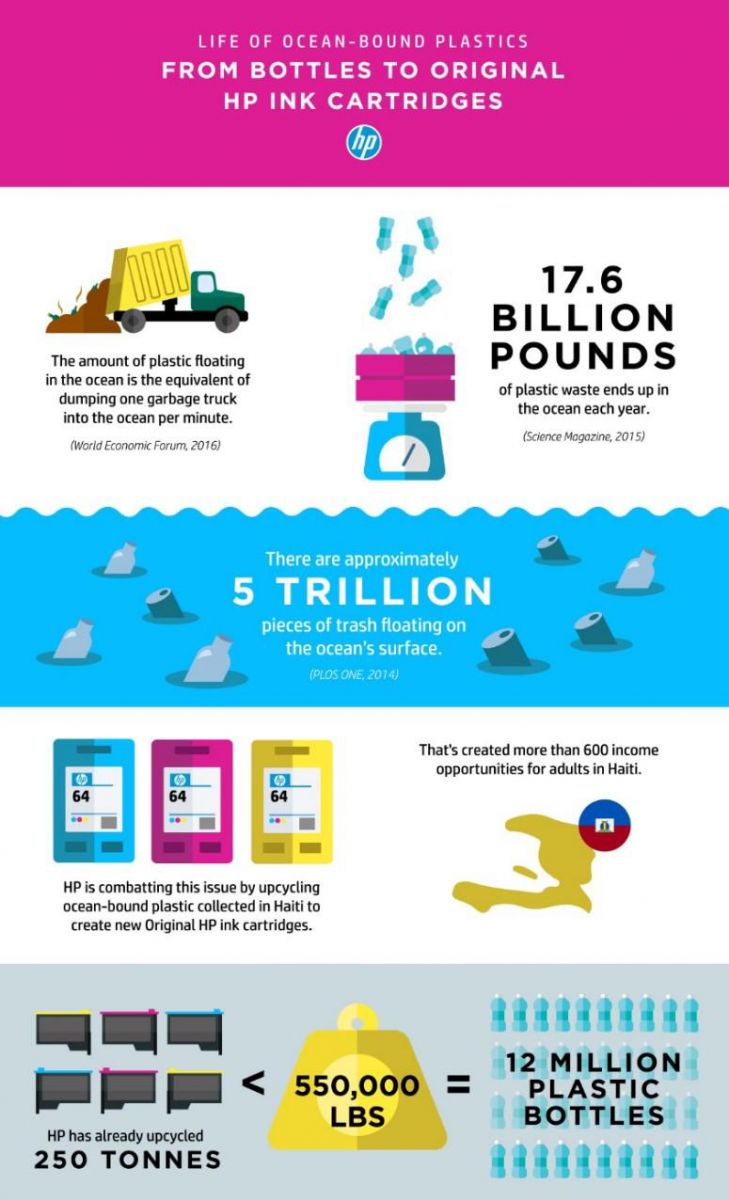Creating A World Without Waste
Three hundred million tonnes of plastic are produced each year worldwide, half of which are for single use and 91 percent are not recycled at all. Packaging is also experiencing an increase in demand as a result of COVID-19 and the online shopping boom. Packaging comprises a significant portion of total waste produced and can affect the health of our planet and people, which is why HP announced a new goal to eliminate 75 percent of single-use plastic packaging by 2025. The goal focuses on hardware unit packaging and is predicated on a move to molded fiber packaging cushions.
HP’s environmental packaging strategy aims to eliminate unnecessary plastics and materials of concerns wherever possible. In 2019, HP decided to eliminate power cord plastic ties and plastic document bags in hardware packaging. HP also has shifted to more recyclable, paper-based alternatives. To accelerate this shift, the company is transitioning from plastic foam packaging cushions to those made with 100 percent recycled, molded pulp for HP’s notebooks, desktops and displays. The transition to molded fiber Personal Systems packaging cushions eliminated 933 tonnes of hard-to-recycle expanded plastic foam last year.
In Printing, HP reduced plastic foam by 40 percent and eliminated over 95 tonnes of the material in 2019 just by redesigning the packaging of a printer model. Launched in 2019, the HP Tango Terra is HP’s first printer with zero plastic packaging, using a combination of molded fiber cushions and glassine paper to replace the typical plastic foam and bag. In 3D printing, HP recently announced the availability of a new material called polypropylene (PP ) that helps reduce waste by enabling up to 100 percent reusability of surplus powder.
HP is also accelerating its use of recycled content plastics across its print and personal systems product portfolio. During 2019, HP used over 25,000 tonnes of post-consumer recycled content plastic in HP print and PS products, or equivalent to 9 percent plastics used. The company is working to increase this to 30 percent by 2025. HP has also sourced 1.7 million pounds – more than 60 million bottles – of ocean-bound plastic, and launched the world’s first notebook, display, mobile workstation and enterprise Chromebook made using ocean-bound plastics. With 111 Gold and 268 Silver EPEAT-registered products – more than any other company in the IT industry, HP has the world’s most sustainable PC portfolio.
Protecting and Restoring Forests
HP aims to regenerate natural systems that sustain life with a focus on protecting and restoring global forests. After eliminating deforestation in the supply chain for HP brand paper in 2016, the company is on track to do the same for its paper-based product packaging by the end of 2020.
In 2019, HP announced its partnership with World Wildlife Fund (WWF) . Together, HP and WWF aim to restore, protect and responsibly manage 200,000 acres of forest, an area equal to the size of New York City. Over five years, HP is contributing $11 million for WWF to restore part of Brazil’s critically threatened Atlantic Forest. In China, the project is focused on increasing the area of sustainably managed forest plantations to improve their resiliency and biodiversity. In both countries with the help of WWF, HP is advancing forest science to quantify the nature benefits of forest restoration activities.
HP has also launched the HP Sustainable Forest Collaborative and those efforts have inspired the Arbor Day Foundation , Chenming Paper, Domtar and New Leaf Paper to join the collaborative and accelerate efforts on forest restoration. The cross-industry collaboration will demonstrate scientific and viable approaches to keeping forests ecosystems healthy. Together, HP and the collaborative members seek others to join the movement of growing forests and biodiversity for future generations.
